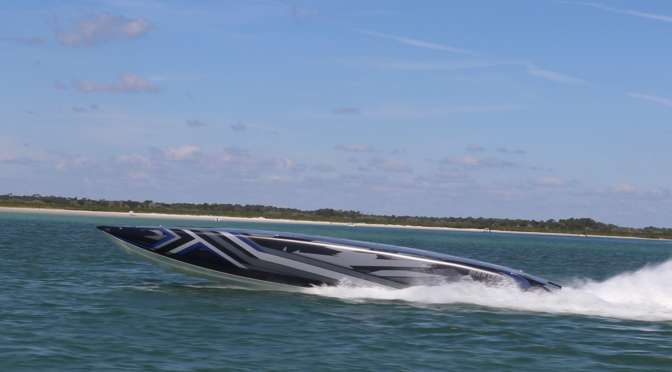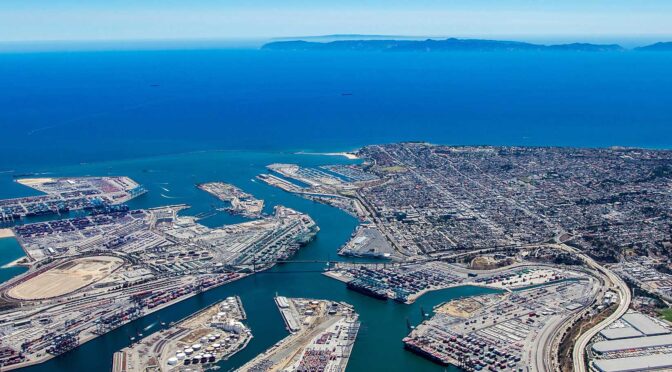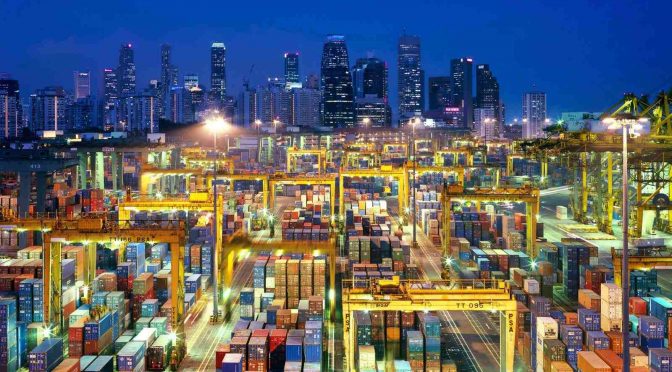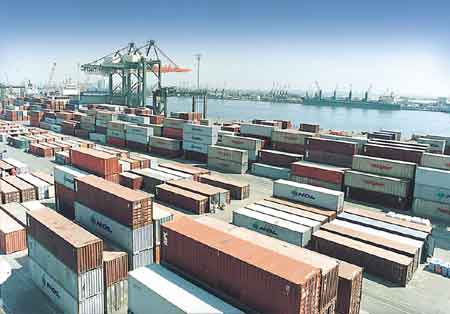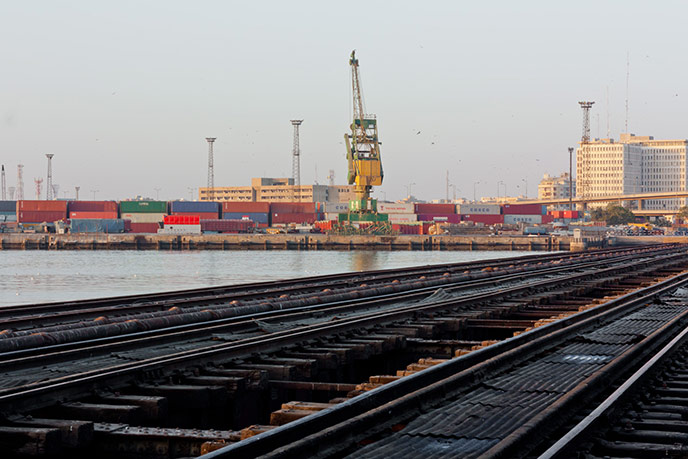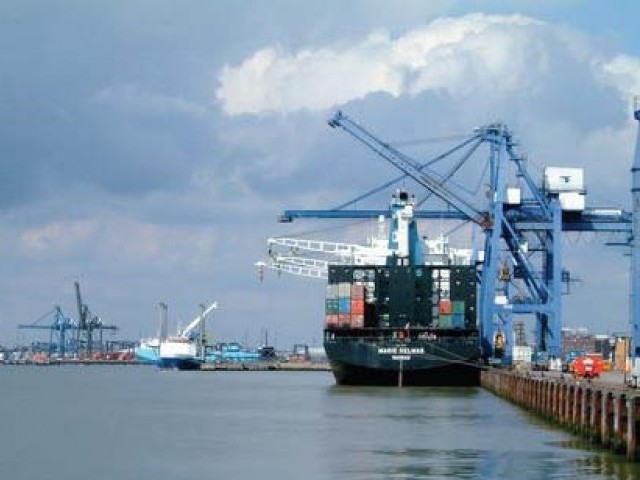By George Galdorisi
“Globalization” instantly brings to mind the flow of international trade that has both lifted hundreds of millions out of poverty and delivered abundant choices to consumers. Almost all of this thrumming trade moves on the high seas, which is where I thought of it throughout my career as an active-duty U.S. naval officer. That blue-water framing changed in August 2020, when deadly explosions rocked the harbor in Beirut, Lebanon. Lost among the headlines that dominated the international news for weeks was the importance of ports and harbors to global commerce.
I live in an American city astride a major U.S. port, and now see it for what it is: a critical node for global trade. While many people focus on the importance of ships in carrying this seaborne trade, they often forget that the critical nodes that support globalization and world trade are the world’s ports and harbors. From Shanghai, to Antwerp, to Rotterdam, to Shenzhen, to Los Angeles, to other mega-ports, as well as hundreds of smaller ports, these ports are critical to world prosperity.
A disaster in one of these ports similar to what happened in the harbor in Beirut—an explosion in port, a fire on a large oil tanker, or any of a host of other events—could close one of these ports indefinitely, with catastrophic economic and ecological effects. More recently, the supply-chain backups at the U.S. ports of Los Angeles and Long Beach demonstrate the ripple effects of even a slowdown at a major port. A complete closure of one of these ports for even a few days would have dire consequences that would be difficult to mitigate without extraordinary effort.
The repercussions of slowdowns and stoppages justify wide-reaching preventative measures, but the magnitude of providing comprehensive security for an average size port—let alone some of the world’s mega-ports—can lure port authorities into wishing away the challenge. Ports present an all-too-inviting target for terrorists, other non-state actors, and even state-backed sabotage, and so ports must be vigilantly defended.
Faced with this challenge, port authorities must ensure security twenty-four hours a day, every day. This task includes continuous inspection of port assets, threat detection and security response, as well as on-demand inspections after storms or other disasters, ongoing surveys to ensure navigable waterways, hull inspections, and a wide-range of other missions.
Unmanned surface vessels can fill this gap better than legacy approaches.
The Current State of Port and Harbor Security
Port and harbor security has changed little in a generation. Most large ports rely on cameras placed at strategic locations and monitored by watch-standers to spot trouble. Port officials also provide security with a variety of manned surface vessels on regular patrols. This traditional approach is good, but it stresses the ability of port authorities to provide around-the-clock security and can lead to gaps in coverage, rendering ports less secure than they could be.
Cameras seem to offer a cheap and effective solution, but someone — often several people —must monitor the video feeds. A port maintaining scores of cameras requires a command center and enough watch-standers, in rotating shifts, to monitor the video in real-time, twenty-four hours a day.
Similar issues accompany the use of manned craft to patrol a harbor of any size—let alone mega-ports. Manned vessel operations are increasingly expensive, are often limited by weather and water conditions. These small craft must be manned, typically by two or more people at a time, who must cope with the physical toll of riding a small vessel for hours on end. Unlike watch-standers on land who might be able to work shifts as long as eight or even twelve hours, pounding through an often-choppy harbor in a RHIB or other small craft means that a watch rotation of three to four hours is about all most people can endure.
With such short watch rotations, providing round-the-clock security is a costly endeavor under ideal conditions. Add rain, wind, waves, fog and other natural phenomena that often reduce visibility and slow patrol speeds, the need for more craft and more people can multiply significantly, often without warning, thereby further driving the need for standby crews. All-in-all, this is an expensive undertaking.
Additionally, there are many shallow areas throughout ports that are beyond the reach of typical manned vessels. Even limited draft craft like RHIBs draw some water when they are loaded with people, communications equipment, weapons and the like. A manned vessel pushing too close to shore also runs the risk of impaling itself—as well as its crew—against visible or invisible hazards. This risk is compounded at night and during dense fog and other adverse weather conditions.
Given the manifest challenges of providing adequate—let alone comprehensive—security for ports with current state-of-the-art systems and capabilities, it is little wonder that port officials are searching for technology solutions that will enable them to provide better security, at lower costs, and importantly, without putting humans at risk.
The Port of Los Angeles: A Mega-Port with a Mega-Challenge
The Port of Los Angeles (POLA) is the busiest port in the United States. This mega-port comprises 3,200 acres (42 square miles) of water, 43 miles of waterfront, 26 passenger and cargo terminals and 86 ship-to-shore container cranes. POLA handled over 9.3 million twenty-foot equivalent units (TEUs) of cargo last year (up from 8.8 million TEUs the previous year and predicted to increase year-over-year).
Current capabilities to secure the Port of Los Angeles’ 42 square miles of water involve monitoring the video provided by 500 cameras throughout the port, as well as patrolling the ports’ expanse of water with a fleet of manned vessels. This methodology stresses the ability of POLA authorities to provide the necessary 24/7/365 security. Additionally, POLA has a large number of shallow areas throughout its 43 miles of waterfront that are beyond the reach of any of the manned vessels.
For these reasons, Port of Los Angeles officials decided to explore the use of unmanned surface vehicles to enhance the security of the port. To that end, port officials invited Maritime Tactical Systems Inc. (MARTAC) to visit and demonstrate the capabilities of their MANTAS USV. MANTAS is a high-performance, commercial off-the-shelf USV built on a catamaran-style hull, and comes in a number of variants ranging in size from six-foot to 50-foot. A demonstration was conducted using a 12-foot MANTAS.
The 12-foot MANTAS (otherwise known as the T12) has a length of twelve feet and a width of three feet. It is fourteen inches high and draws only seven inches of water. The MANTAS can be equipped with a wide variety of above-surface sensors (EO/IR/thermal video) and below-surface sensors (sonars and echo-sounders), as well as other devices such as chem/bio/nuclear sensors, water quality monitors, and above/below surface environmental sensors.
Leveraging Previous Successful Demonstrations
POLA authorities requested the MANTAS demonstration principally because the system had performed so well in an earlier port security demonstration, the Mobile Ocean Terminal Concept Demonstration in Concord, CA, conducted by the U.S. Army’s Physical Security Enterprise & Analysis Group.
For these missions, three MANTAS vessels, T6, T8 and T12, were used to perform different operations. The MANTAS T6 was utilized as an intercept vessel to quickly address potential threats at high-speeds of up to 55 knots. This T6 was equipped with a standard electro/optical camera focused on rapid interdiction and threat identification. The second vessel was a MANTAS T8 equipped with a FLIR M232 thermal camera. Its role was as a forward-looking harbor vessel situational awareness asset. The final vessel was a MANTAS T12 tasked with prosecuting above and below surveillance operations to detect and identify intruder vessels, or other threats to harbor assets. The sensor kit included a SeaFlir 230 for above surface ISR capabilities and a Teledyne M900 for subsurface diver/swimmer detection.
The Port of Los Angeles Unique Requirements
During the visit to the Port of Los Angeles, MARTAC representatives provided a comprehensive briefing on MANTAS capabilities, took a three-hour boat tour to observe the entirety of POLA authorities’ span of operations, and then provided a remote demonstration where port officials controlled and observed a MANTAS T12 operating off the eastern coast of Florida. The demonstration validated the going-in assumption that employing a thoroughly tested and proven USV is a viable solution that POLA is keen to pursue.
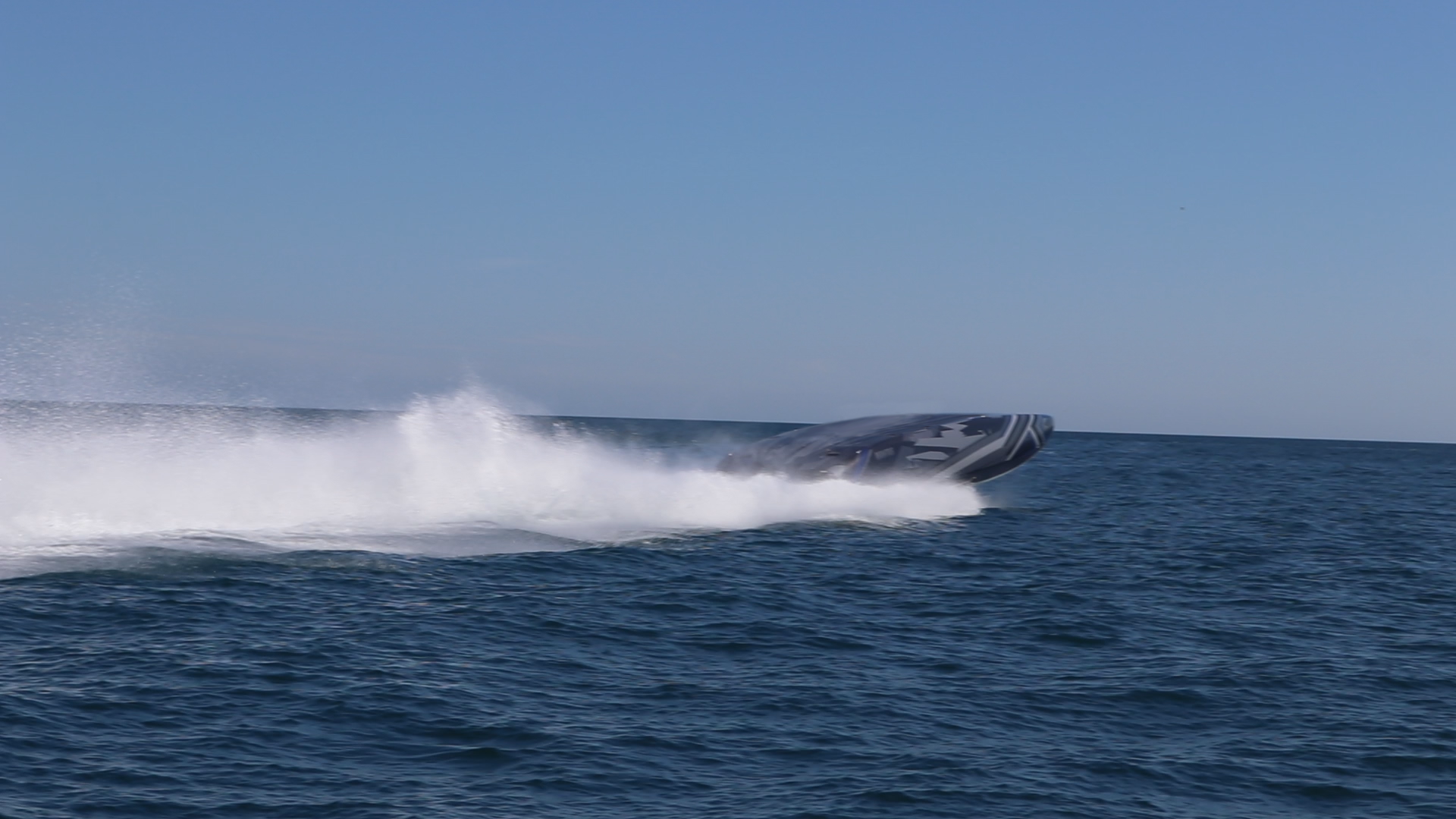
After observing the MANTAS remote demonstration, officials from the Port of Los Angeles determined that the capabilities of this USV met the requirements for the port’s wide variety of missions. That said, port officials asked MARTAC to scale-up the MANTAS to a 24-foot and 38-foot version, reflecting a concert that the 12-foot MANTAS was so stealthy that ships in transit would not see it. Additionally, the larger T24 and T38 could operate for longer periods and carry additional sensors. The T38 MANTAS has now been demonstrated in several U.S. Navy exercises, and conducted another port security demonstration in the Port of Tampa with similar results.
MANTAS has an open architecture and modular design, which facilities the rapid changing of payload and sensor components to provide day-to-day port security as well as on-demand inspections. Additionally, if a longer endurance or an increased mission payload sensor profile was desired by the port, the modularity of the MANTAS system will easily allow for increasing the size of the craft from the battery powered electric motor 12-foot T12 to a marine diesel fueled 24-foot T24 or 38-foot T38. This transition would eliminate the necessity for battery replacement/recharging on the T12 after each of the shorter missions.
This demonstration certified that commercial-off-the-shelf unmanned surface vehicles can ably conduct a comprehensive harbor security inspection of a mega-port such as the Port of Los Angeles. As a facility with a longstanding need to augment its manned vessel patrol activities with emergent technology in the form of unmanned surface vehicles, the Port of Los Angeles demonstration provided a best practices example of the art-of-the-possible for augmenting port security.
Enhancing the Effectiveness of Port and Harbor Security
The reliable, adaptable and affordable USV support to port security as described in this article has only been evaluated recently because the technology simply did not exist just a few years ago.
In an article in the January 2020 issue of U.S. Naval Institute Proceedings, Commander Rob Brodie noted: “When the Navy and Marine Corps consider innovation, they usually focus on technology they do not possess and not on how to make better use of the technology they already have.” Extrapolating his assertion to the multiple entities responsible for port and harbor security at mega-ports such as the Port of Los Angeles, one must ask if maritime professionals are to slow to leverage an innovative solution that can be grasped immediately.
This technology is available today with commercial off-the-shelf unmanned surface vessels, and these can be employed to increase the effectiveness of port protection if we do as Commander Brodie suggests and “make better use of the technology we already have.” And given the enormous personnel costs associated with monitoring cameras and patrolling with manned vehicles, this innovative solution designed to supplement current capabilities will drive down acquisition and life cycle costs while resulting in shorter times for a return on investment (ROI).
This Port of Los Angeles demonstration and subsequent Port of Tampa validation certified that commercial-off-the-shelf unmanned surface vehicles can ably conduct a comprehensive security inspection of a mega-port. As a facility with a longstanding need to augment its manned vessel patrol activities with emergent technology in the form of unmanned surface vehicles, the Port of Los Angeles demonstration provided a best practices example of the art-of-the-possible for enhancing port security.
As the world continues to come to grips with the human and economic impact of the Beirut harbor disaster, all nations would be well-served to leverage emerging technology to enhance the security of the ports and harbors that make the global economy hum. To fail to do so would be inviting a disaster that is eminently preventable.
Captain George Galdorisi (USN – retired) is a career naval aviator whose thirty years of active duty service included four command tours and five years as a carrier strike group chief of staff. He began his writing career in 1978 with an article in U.S. Naval Institute Proceedings. He is the Director of Strategic Assessments and Technical Futures at the Navy’s Command and Control Center of Excellence in San Diego, California. The views presented are those of the author, and do not reflect the views of the Department of the Navy or Department of Defense.
Featured Image: The Devil Ray USV (Photo by Jack Rowley)

